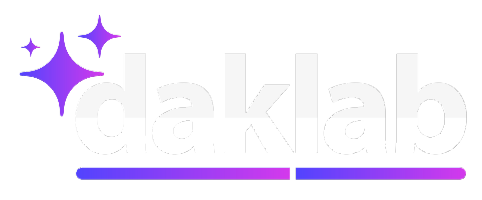Free Resources
Web Design Glossary
Real Estate Website Design and Development can get pretty technical. Therefore we have created a quick reference guide to many common terms. If you have a question about a term listed here, or even about a term not on this list, simply let us know.
Common Terms used in Real Estate Web Development
- Browser
- Often called a Web browser, it is simply a software application used to interpret HTML commands and display page content. The two most popular browsers are Microsoft Internet Explorer (IE) and Netscape Navigator.
- DNS [Domain Name System (Service)]
- An Internet system/service that translates domain names into IP addresses. Domain names are alphabetic so they're easier to remember. The Internet however, is really based on IP addresses. Every time you use a domain name, therefore, a DNS service must translate the name into the corresponding IP address. For example, our domain name https://www.dakno.com is really http://207.44.218.12
- Domain Name
- Your web address (i.e. www.anyname.com)
- Flash
- A software program from Macromedia that allows you to create small animations. The viewer must install the Flash plugin to play these files.
- FTP [File Transfer Protocol]
- One of the common methods of transferring files over the Internet. A typical method used for uploading files (pages) to a hosting server for viewing on the Internet.
- Hosting
- Usually refers to a computer (or a network of servers) that stores the files of a web site which has web server software running on it, connected to the Internet. Your site is then said to be Hosted.
- HTML [HyperText Markup Language]
- HTML is a basic markup language derived from the Standardized General Markup Language (SGML), providing the means for creating simple hypertext documents, intended for publishing on the World Wide Web.
- JavaScript
- JavaScript is an object-based, client-side scripting language developed by Netscape. Embedded in the head section of a web document, it can produce interactivity to a web page dynamically.
- META Tags
- Contain information about your Web page that is read by the server. The information in the META tags doesn't appear on the Web page itself, but you can see it if you view the source code. META tags are placed in the HEAD element, and the most used ones are keywords and description. These tags are used by search engines, and if done properly can increase your chances of getting into search engines in a higher placement.
- Multimedia
- A form of communication combining text with graphics, page layout, video, audio, animation, and so forth.
- Stands for Portable Document Format. Created by Adobe Systems in its software program Adobe Acrobat as a universal browser. Files can be downloaded via the web and viewed page by page, provided the user's computer has installed the necessary plug-in which can be downloaded from Adobe's own web site.
- PHP [Hypertext Preprocessor]
- A server-side, HTML embedded scripting language used to create dynamic Web pages. Designed for Windows and Unix type platforms.
- Ranking
- The number (order of ranking; ie 1 being the highest) that a web site is listed for a specific search term in a specific search engine. Search Engines utilize a ranking algorithm (mathematical formulas, variables, and set of weights) to determine a site's ranking for a particular keyword or keyword phrase.
- Resolution
- The number of dots per inch on a computer monitor.
- Royalty-Free Photos or Images
- Photos, graphic images, or other intellectual property that are sold for a single standard fee and may be used repeatedly by the purchaser. Typically with royalty-free clauses, the company that sells you the images still owns all of the rights to the images, and they are allowed for use only by the purchaser (i.e., the same images cannot be used by another company or individual without repurchase).
- Scope
- An umbrella term that establishes the amount of content and functionality of a website at a set point.
- Script
- A script is an executable list of commands created by a scripting language. Scripts that are executed on a web server (eg; Perl, PHP) are said to be server-side scripts. Scripts that execute on your own home PC (eg; JavaScript) are said to be client-side scripts. Scripts can be embedded within HTML to produce a web page with dynamic actions.
- Search Engine
- A server (computer) or commonly a collection of servers dedicated to indexing internet web pages, storing the results in a giant database and returning lists of pages which match particular searched queries from within its database. The indexes are normally and automatically generated using spiders.
- Server
- A computer, program or process which responds to requests for information from a user. On the internet, all web pages reside on servers (computers).
- Site Map
- A document that defines a web site's scope and functionality. It loosely establishes organization as well, though this is subject to change according to the demands of transitioning a website from theory into reality. Think of it as a flexible blueprint.
- Style Guide
- A document that details recommended usage of graphic elements which is designed to create a uniform look across promotional materials and websites. Establishes best practices for use of logos, typography, colors and layout in order to develop brand equity through visual consistency.
- Web Site
- A web site is a collection of electronic pages generally formatted in HTML (Hypertext Markup Language) that can contain text, graphic images, and multimedia effects such as sound files, video and/or animation files, and other programming elements such as Java and JavaScript.
 your other subscriptions
your other subscriptions

